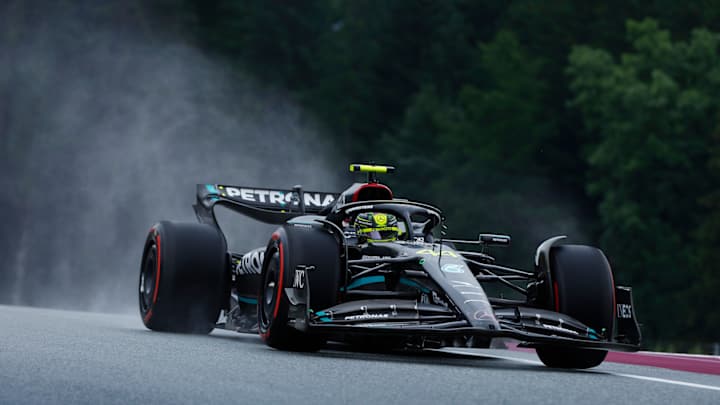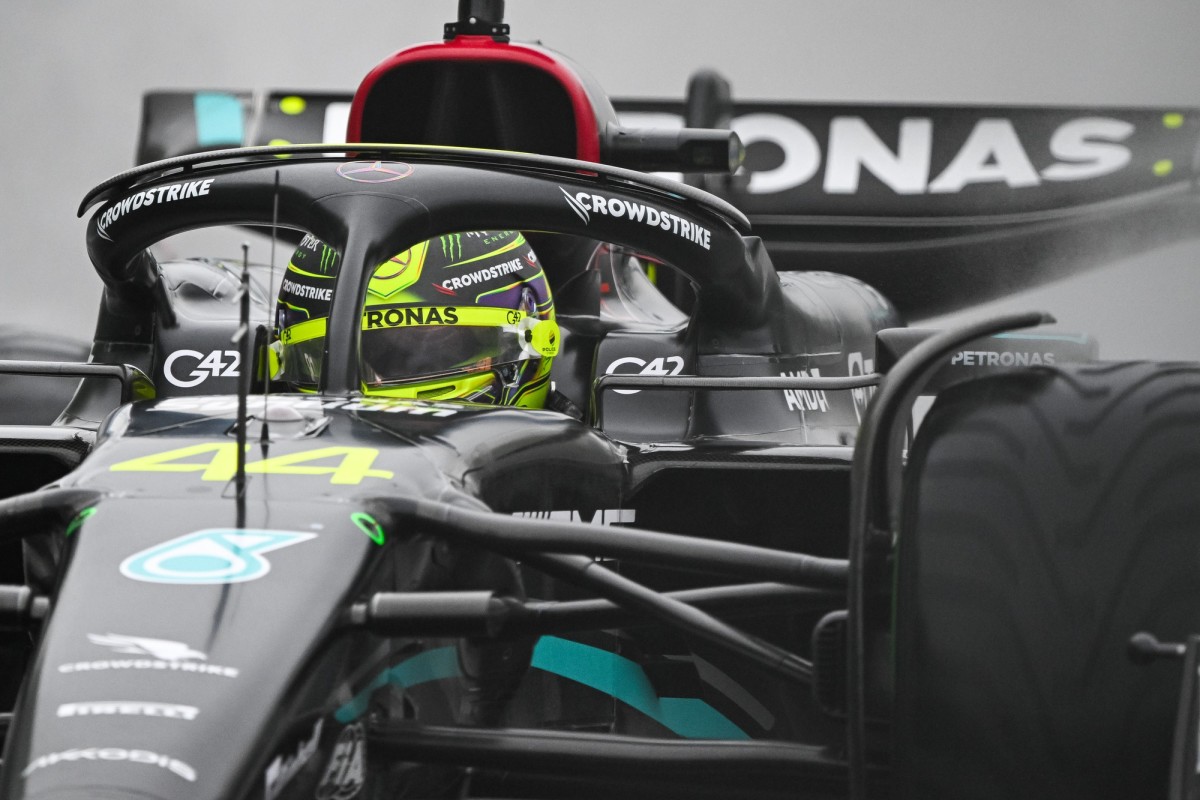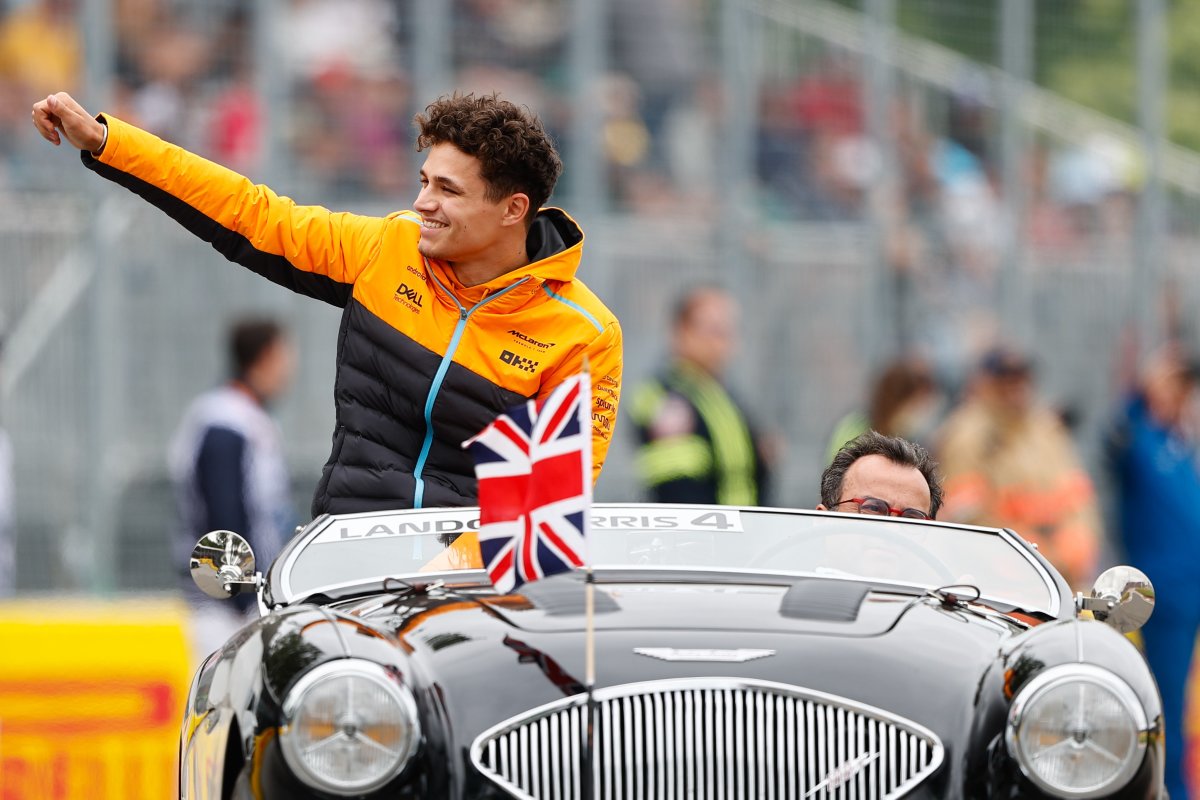F1 News: Drivers Weigh In On Changes Coming To Cars For Wet Weather

On the 13th of July, Silverstone's fastest stretch Wellington Straight will be soaked with water artificially. The straight will be used by McLaren and Mercedes F1 cars to test the performance of wheel arches, also known as 'mudguards'.
The data obtained from the test will allow the FIA to gauge the effectiveness of the mudguards. Water spray left behind by F1 cars in wet conditions has become a major safety concern for drivers who are unable to see anything in front of them.
The idea of the 'mudguards' came up during the 2021 Belgian Grand Prix at Spa where the FIA wanted a solution to dangerous zero visibility wet weather racing.
Things got fast-tracked after last weekend's fatal accident involving Formula Regional driver Dilano van ’t Hoff at Spa. If the 'mudguards' prove to be effective, they will most probably be introduced into the junior categories.

The test of this spray-mitigating mudguard is something that most drivers have welcomed. Voicing his opinion, Pierre Gasly spoke to Autosport after being asked about the subject:
"I think visibility in the rain is critical.
“Unfortunately what's happened in Spa. I even had a conversation with Esteban [Ocon] on the parade [in Austria], and we had a very similar situation in 2012 Formula Renault two litres, where we both started from the back of the grid in similar conditions.
"And to be fair, you're praying for your life that no one stopped in the middle because you can't even see five metres ahead of you.
"In extreme conditions, I think most of the time the reason why we don't get on the track is not so much for driving-wise purposes, but just the fact that we just can't see where we're going.
"This I think is definitely one point to address. I really hope it can improve that.”
Lance Stroll can't wait for the arches to be installed on the cars if the test proves to be successful. He said:
“We can’t see anything in heavy wet weather.
"I can remember Japan last year, I can recall many races over the past few years in F1 where you just cannot see anything when you're behind a car.
"And it's extremely dangerous if someone has an incident in front of you and is sideways in the middle of the track. You can't see where you're going.
"I don't think we should be racing like that, so it definitely is something that if it works, has to be put on the cars as quickly as possible. And if it doesn't work we shouldn't be putting ourselves in situations where we're racing in conditions where we can’t see.
"Accidents can happen, and they can be really severe accidents. So definitely, if it works, get it on the cars as quickly as possible and hopefully it does work and it's a great solution going forward to wet weather racing.”

Lando Norris, who will be taking part in the test on the Wellington Straight says that it is high time something was done to address the biggest safety concern within F1. Bringing up the issue that was neglected for a long time, he says:
“I'd say it's about time that we're going to do something. I think as drivers we've said it for years that something needs to be done. I think we've been lucky that nothing has happened within I’d say F1 or many other categories.
"And in the worst case, sadly, we've had to lose a life for people to realise that those things can happen, and if it could just happen there it could have happened last weekend for us in Austria.
“It's a shame we had to see such a consequence for people to understand what can happen. I think it's something that needs to be done. I would say it's the biggest safety concern at the minute within F1.
"No matter what way you look at it, what's the next thing that can improve safety the most? It's actually being able to see where we're going. That helps sometimes!
"I look forward to it. I'm doing a test so we'll see soon how good it's going to be, but if it doesn't work, something else needs to be done to find a solution.”
Red Bull's Sergio Perez says the arches could have an aerodynamic impact. However, he also stresses the fact that safety is better than downforce.
“I think if they work, I will definitely like to see them put in, certainly in F1.
"Although it's going to be quite penalising, maybe more for some teams than others in terms of downforce, but I think it's something that safety should come first and it might allow us to race in more dangerous conditions."
“Especially with what happened last weekend, I think it's something that we got to improve. But for now, I think it's just important that race directors let us race only when it's safe, and actually, the whole grid is able to see something.”
It looks like last weekend's horrific accident at Spa has finally woken up the decision-makers to do something about that one big factor compromising safety in a major way in Formula 1.
